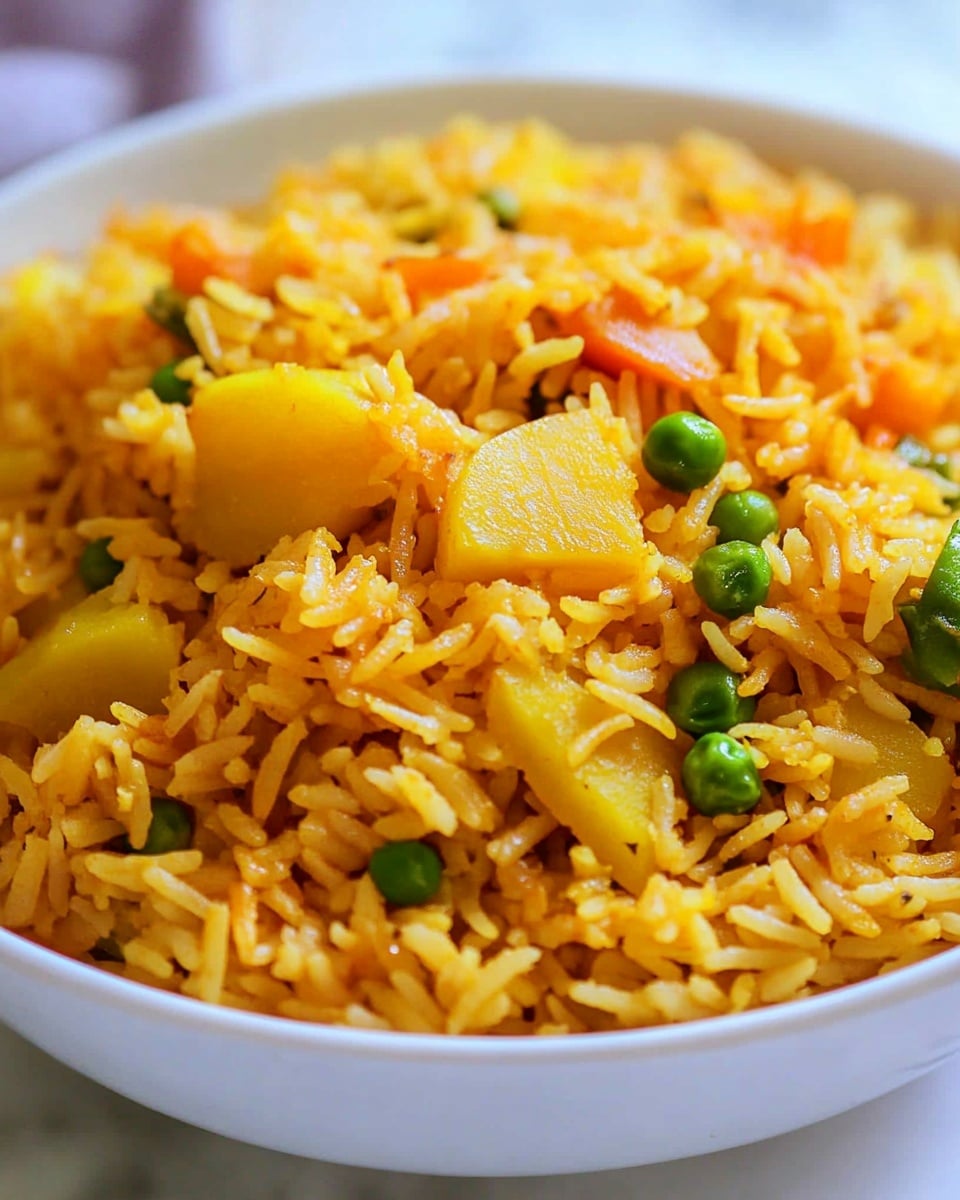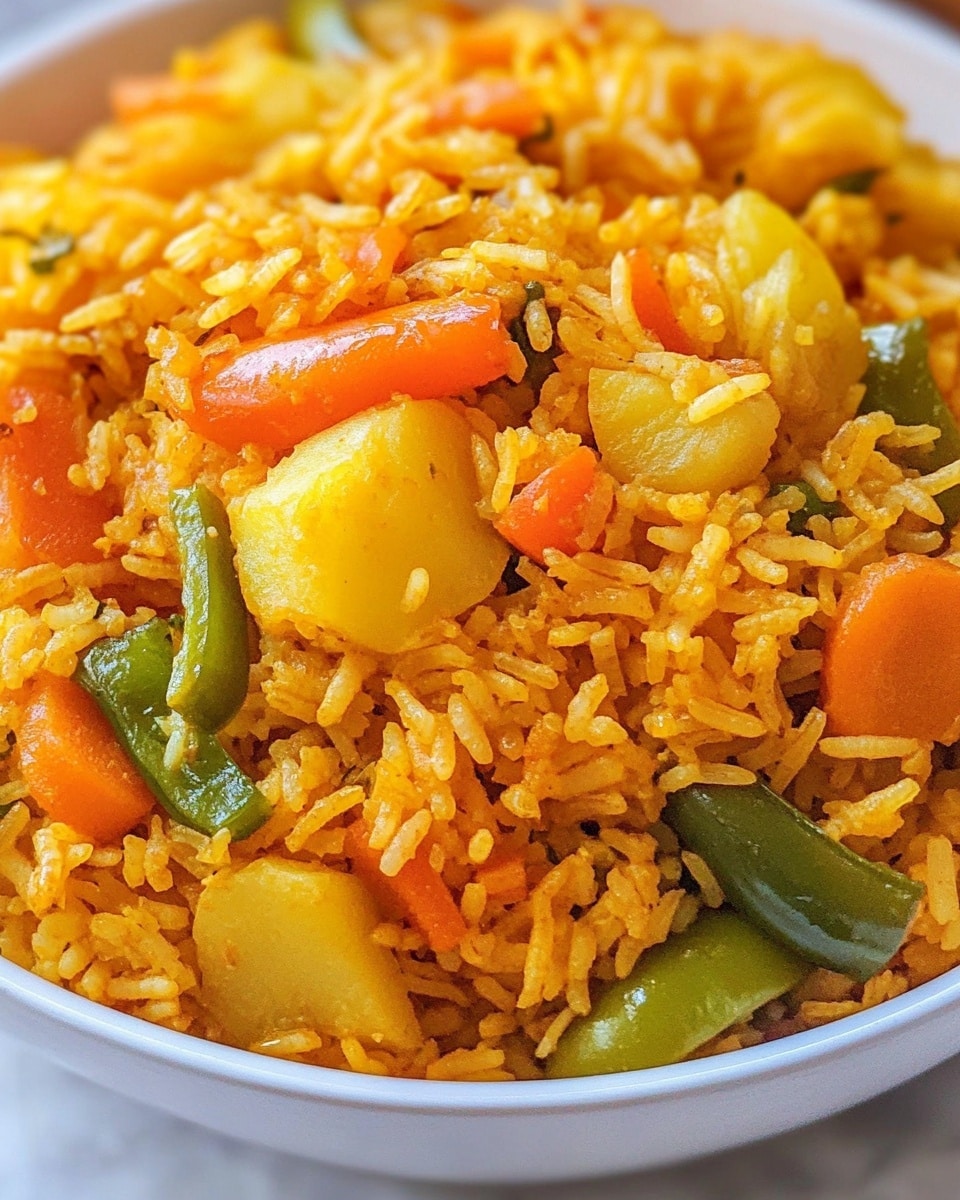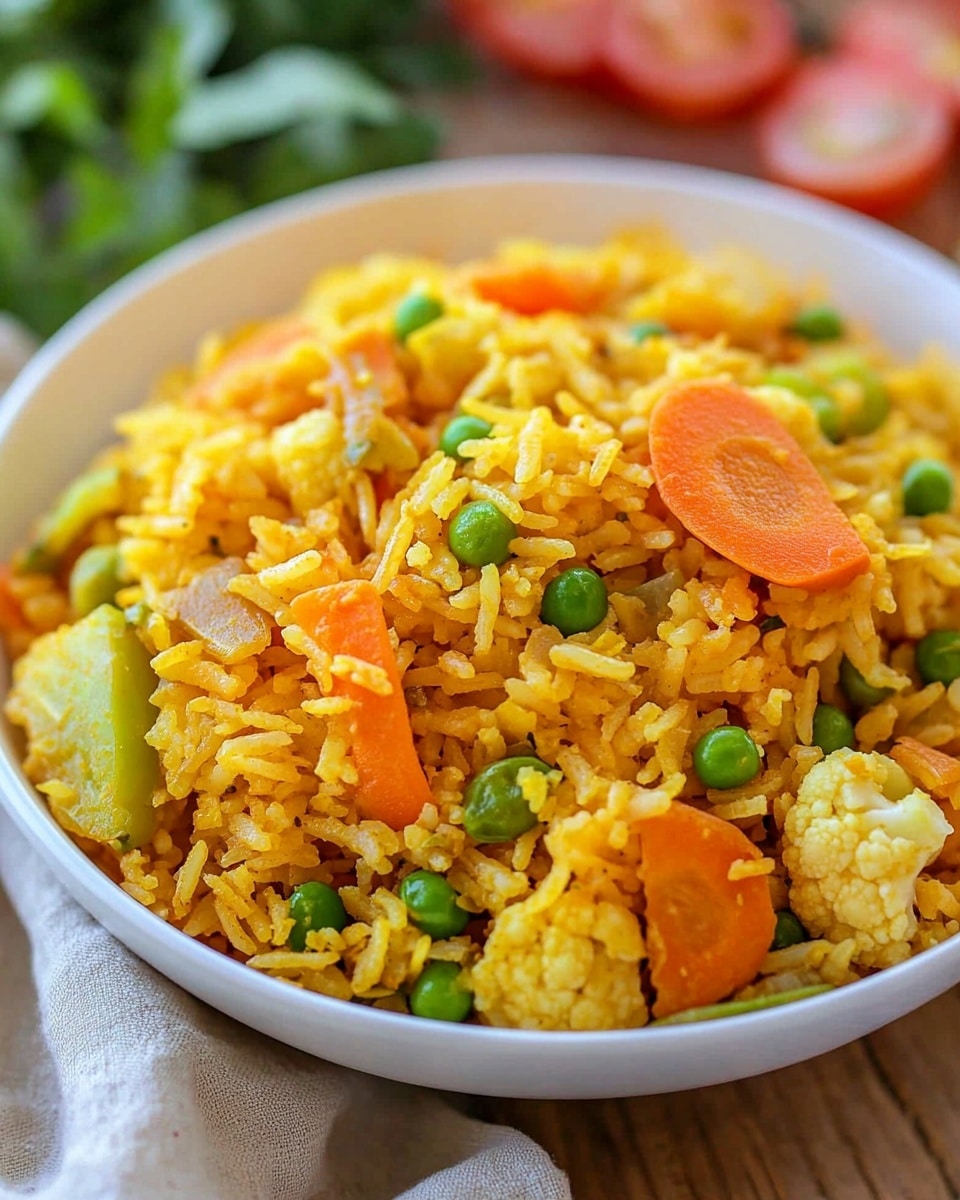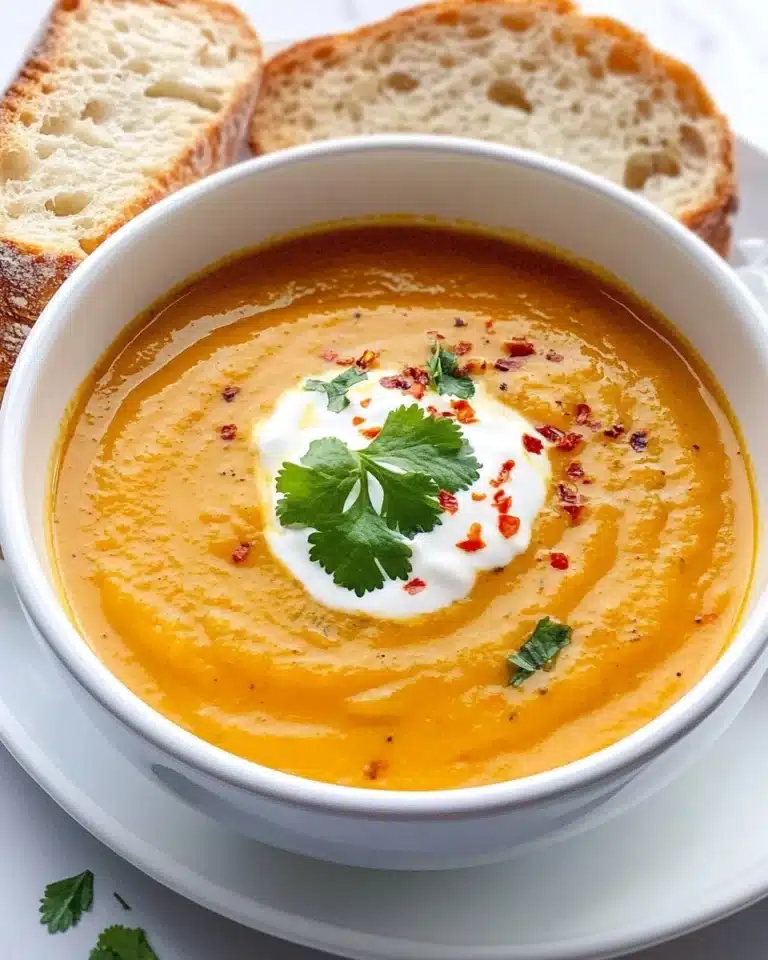I’ve always believed that a meal should feel like a warm hug, and this Easy Vegetable Biryani Recipe does just that. It’s a beautiful blend of fragrant spices, colorful veggies, and fluffy basmati rice all cooked into one harmonious dish that s as comforting as it is delicious. Whenever I make it, my kitchen fills with scents that instantly lift the mood – perfect for cozy weeknight dinners or when you want something special without a ton of fuss.
What makes this Easy Vegetable Biryani Recipe truly worth your while is how adaptable it is. You can use whatever vegetables you have on hand, and still end up with that signature layered flavor that makes biryani so beloved. Plus, it s surprisingly simple given how impressive it tastes – a total win when you want a show-stopping meal but don t want hours of prep.
Why You’ll Love This Recipe
- Simple Ingredients: Uses everyday vegetables and spices you probably already have in your pantry.
- One-Pot Wonder: Everything cooks together, saving you time and cleanup, which I always appreciate on busy nights.
- Customizable: You can swap in your favorite veggies or adjust spice levels to suit your palate perfectly.
- Deliciously Aromatic: The blend of spices creates layers of flavor that always have my family asking for seconds.
Ingredients You’ll Need
Choosing fresh, crisp vegetables here really makes a difference – and I love using basmati rice for its fluffy texture and subtle fragrance that tie everything together.
- Olive Oil or Ghee: Ghee adds a rich, nutty flavor, but olive oil works well for a lighter option.
- Yellow Onion: Look for firm, unblemished onions for the best sweetness.
- Garlic: Freshly minced garlic brings wonderful aroma and depth.
- Ginger: Use fresh ginger to brighten up the dish with a subtle kick.
- Roma Tomato: Ripe tomatoes help create the saucy base that balances the spices.
- Water: Needed to cook down the tomato mixture and build flavor.
- Peas: Frozen peas perfectly capture that slightly sweet burst in every bite.
- Carrot: Thin slices cook evenly and add a nice touch of sweetness.
- Russet Potatoes: Make sure they re evenly chopped so they cook through without falling apart.
- Green Bell Pepper: Adds crunch and a fresh, slightly bitter note.
- Celery: Thinly sliced for subtle earthiness and texture.
- Cauliflower Florets: A great way to add body and soak up those flavors.
- Kosher Salt and Black Pepper: Season to enhance and balance the taste.
- Cayenne Pepper: Adds a gentle heat – adjust according to your spice tolerance.
- Garam Masala: This is the heart of your biryani s signature flavor, so use fresh if you can.
- Coriander: Brings a warm, lemony undertone.
- Ground Turmeric: For color and earthy depth.
- Cumin: Toasty and nutty, complements all the spices beautifully.
- Cinnamon: A small touch adds warmth and subtle sweetness.
- Vegetable Broth: Use a good-quality broth for an extra layer of savory flavor.
- Basmati Rice: Rinse thoroughly to remove excess starch and keep it fluffy.
Variations
One of the things I love most about this Easy Vegetable Biryani Recipe is how easy it is to make it your own. Feel free to swap veggies, play with spices, or turn it into a vegan delight-you really can’t go wrong.
- Add Protein: I sometimes toss in chickpeas or paneer cubes for extra heft and creaminess-my family loves the added texture.
- Spice Level: If you prefer mild flavors, reduce the cayenne pepper; for heat lovers, add a bit more along with fresh green chilies.
- Seasonal Veggies: Zucchini, green beans, or snap peas can be great swaps depending on what s fresh – I always check the farmers market first.
- Use Ghee: If you want that authentic touch, swapping olive oil for ghee really deepens the flavor in a way I discovered over time.
How to Make Easy Vegetable Biryani Recipe
Step 1: Sauté the Aromatics Until They re Perfectly Soft
Heat your olive oil or ghee in a large Dutch oven over medium-high heat until shimmering. Add the diced yellow onion and stir frequently to prevent burning; you want them translucent and sweet, about 3 to 4 minutes. This step builds the foundational flavor, so take your time and keep the heat steady to coax out the natural sugars in the onion without browning them too much.
Step 2: Create the Tomato-Ginger-Garlic Mixture
Now stir in the minced garlic, ginger, and finely chopped roma tomato along with 1/2 cup of water. Let it come to a gentle simmer and cook until the water evaporates and the sauce thickens, around 10 minutes. This is a crucial step – I learned that rushing this will leave you with a watery biryani that lacks depth. Patience here really pays off, concentrating the flavors beautifully.
Step 3: Add the Vegetables and Spice Them Generously
Toss in the peas, carrot slices, potatoes, bell pepper, celery, and cauliflower. Stir everything well to coat veggies with the tomato and aromatics mixture. Sprinkle the salt, cayenne, black pepper, garam masala, coriander, turmeric, cumin, and cinnamon over the veggies. Mix thoroughly so no spot is left without those enticing spices. This is where your biryani starts coming alive – I often take a quick taste here to fine-tune seasoning before moving on.
Step 4: Cook the Rice Together with Broth and Veggies
Pour in the vegetable broth and bring the whole pot to a boil. In the meantime, rinse your basmati rice under cold water until it runs clear – this step is key to avoid sticky rice. Add the rice to the boiling mixture, give it one gentle stir, then reduce heat to low, cover, and let it simmer for 18-20 minutes. Your rice should be tender and have soaked up the broth perfectly. Resist the urge to lift the lid too often – trapping steam is essential for that fluffy texture.
Step 5: Let the Biryani Rest Before Serving
Once cooked, turn off the heat and keep the lid on, letting the biryani rest for 5 minutes. This resting period lets all flavors marry and the rice to settle. Fluff gently with a fork to separate the grains, then you re ready to plate up and enjoy. This little pause is a game-changer – I always notice the difference it makes in texture and taste.
Pro Tips for Making Easy Vegetable Biryani Recipe
- Rinse Rice Thoroughly: This removes excess starch and keeps the rice fluffy – a tip I picked up after a few sticky batches!
- Use Fresh Spices: Garam masala and other spices lose their punch over time, so fresh ones make a big flavor difference.
- Don t Rush the Tomato Base: Let it simmer slowly so the moisture evaporates and the flavors concentrate nicely.
- Keep the Lid On While Cooking Rice: This lets steam do the work for perfectly cooked rice every time – I learned this after a few dry attempts.
How to Serve Easy Vegetable Biryani Recipe

Garnishes
I love finishing my biryani with a sprinkle of freshly chopped cilantro and a handful of toasted cashews for crunch. Sometimes, I add a few fried onions on top for that extra caramelized sweetness. A squeeze of fresh lemon juice right before serving really brightens all the flavors and ties it all together.
Side Dishes
This biryani pairs beautifully with cooling raita-a yogurt sauce with cucumber and mint that balances the spices perfectly. I also like to serve it alongside simple cucumber salad or warm naan bread to make it a complete meal that satisfies every craving.
Creative Ways to Present
For special occasions, I like layering the biryani in a large glass dish, alternating rice with sautéed vegetables and topping it with bright saffron strands soaked in warm milk. It adds visual appeal and an extra fragrant touch. You could also serve it in small, decorative bowls or even stuff it into warm pita pockets for a fun twist!
Make Ahead and Storage
Storing Leftovers
Once your biryani cools, store leftovers in an airtight container in the refrigerator. I find it keeps well for up to 2 days without losing its charm. When I ve meal prepped, this is my go-to lunch because it tastes even better the next day as the flavors deepen.
Freezing
I ve had good luck freezing this biryani in portioned freezer-safe containers. Just make sure it s fully cooled first! It freezes well for up to 2 months, which makes for an easy, delicious meal whenever you need it.
Reheating
To reheat, I thaw it overnight in the fridge or gently warm from frozen in a covered skillet with a splash of water or broth to restore moisture. Heating it low and slow keeps the rice fluffy and the veggies tender, avoiding any dryness.
FAQs
-
Can I make this Easy Vegetable Biryani Recipe vegan?
Absolutely! This recipe is naturally vegan if you use olive oil instead of ghee and vegetable broth. It s a great plant-based meal that s hearty and flavorful without any animal products.
-
What s the best way to prevent the rice from getting mushy?
Rinse your basmati rice thoroughly to remove starch and avoid stirring after you add the rice to the pot. Also, keep the lid on while cooking to let the steam work its magic. This helps keep the rice fluffy and separate rather than sticky.
-
Can I use other vegetables in this biryani?
Definitely! Feel free to use seasonal or preferred vegetables like zucchini, green beans, or snap peas. Just keep in mind the cooking times so everything cooks evenly without becoming mushy or underdone.
-
How spicy is this biryani, and can I adjust it?
This recipe has a mild to medium heat level thanks to the cayenne pepper, but you re in full control-you can dial it down or ramp it up based on your taste. Adding fresh chilies or extra cayenne will bring more heat, while reducing the cayenne keeps it gentle.
Final Thoughts
This Easy Vegetable Biryani Recipe has become one of my absolute favorite go-to meals because it s dependable, hearty, and packed with so much flavor. I love sharing it with friends because it s approachable for cooks of all levels, yet impresses every time. Give it a try-you ll find it s not just a dish, but more of a cozy experience that makes weeknights feel special without tons of work.
Print
Easy Vegetable Biryani Recipe
- Prep Time: 30 minutes
- Cook Time: 30 minutes
- Total Time: 1 hour
- Yield: 6 Servings
- Category: Main Course
- Method: Stovetop
- Cuisine: Indian
- Diet: Vegetarian
Description
This Easy Vegetable Biryani recipe is a vibrant and aromatic one-pot meal combining basmati rice with a medley of fresh vegetables and traditional Indian spices. Perfectly balanced with sautéed aromatics, a rich tomato base, and a blend of fragrant seasonings, it is a flavorful vegetarian dish that’s simple to prepare and comforting to enjoy.
Ingredients
Olive Oil and Aromatics
- 3 tablespoons olive oil, or ghee if available
- 1 yellow onion, cut into 1/2-inch dice
- 1 tablespoon garlic, minced
- 1 tablespoon ginger, minced
- 1 roma tomato, minced finely
- 1/2 cup water
Vegetables
- 1/2 cup peas
- 1 carrot, sliced into thin coins
- 2 russet potatoes, peeled and chopped
- 1 green bell pepper, sliced
- 2 stalks celery, thinly sliced
- 1 cup cauliflower florets
Spices and Seasonings
- 2 teaspoons kosher salt
- 1/4 teaspoon cayenne pepper
- 1/2 teaspoon black pepper
- 2 teaspoons garam masala
- 1 teaspoon coriander
- 1/2 teaspoon ground turmeric
- 1 teaspoon cumin
- 1/2 teaspoon cinnamon
Liquids and Rice
- 4 cups vegetable broth
- 2 cups basmati rice, rinsed and drained
Instructions
- Sauté Aromatics: Add olive oil to a large Dutch oven over medium-high heat. Once hot, add the chopped onion and cook until translucent, about 3-4 minutes, stirring occasionally to prevent sticking.
- Cook Tomato Mixture: Stir in minced garlic, ginger, and tomatoes along with 1/2 cup water. Bring to a simmer and cook until the water evaporates and the mixture thickens, about 10 minutes.
- Add Vegetables: Incorporate the peas, sliced carrots, chopped potatoes, sliced bell pepper, celery, and cauliflower into the pot. Stir well to combine all vegetables with the aromatic mixture.
- Season the Vegetables: Add salt, cayenne pepper, black pepper, garam masala, coriander, turmeric, cumin, and cinnamon. Stir thoroughly to evenly distribute the spices.
- Cook Rice: Pour in the vegetable broth and bring the mixture to a boil. Rinse the basmati rice under cold water until the water runs clear. Add rice to the boiling mixture, stir once, reduce heat to low, cover, and simmer for 18-20 minutes until the rice is tender and broth is absorbed.
- Rest and Serve: Turn off the heat, leave the lid on, and let the biryani sit covered for 5 minutes. Fluff with a fork and serve hot, garnished with fresh herbs if desired.
Notes
- Feel free to customize the vegetables based on what you have available—green beans, snap peas, or zucchini work well.
- For additional flavor, garnish with chopped cilantro or a squeeze of fresh lemon before serving.
- Using ghee instead of olive oil enhances the traditional flavor of biryani.
- This dish can be made ahead and stored in the refrigerator for up to 2 days.
Nutrition
- Serving Size: 1/6 of the dish
- Calories: 320 kcal
- Sugar: 7 g
- Sodium: 620 mg
- Fat: 8 g
- Saturated Fat: 1 g
- Unsaturated Fat: 7 g
- Trans Fat: 0 g
- Carbohydrates: 56 g
- Fiber: 5 g
- Protein: 7 g
- Cholesterol: 0 mg









